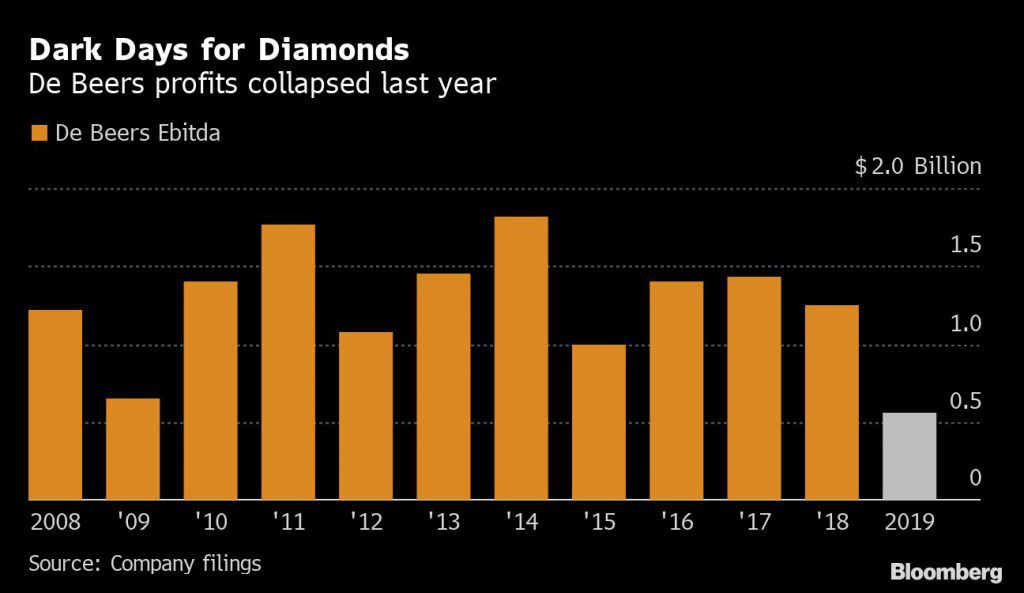De Beers, the world’s largest diamond miner by value, cut 2020 production guidance by a fifth on Thursday, as the coronavirus pandemic has brought the global supply chain to a halt, affecting demand.
The Anglo American (LON:AAL) unit said it expected to produce between 25 and 27 million carats this year, down from a previous forecast of 32 to 34 million carats.
It expects to produce 25 to 27 million carats in 2020, down from a previous forecast of 32 to 34 million carats.
The revised figure, De Beers said, is subject to ongoing adjustments to disruptions related to covid-19 as well as the timing and scale of the recovery in trading conditions.
The diamond market was in dire
state even before the coronavirus came along. Now, weeks into lockdowns in
India, where most stones are cut and polished, as well as in other key nations,
including top retailers, even major players face a bleak future.
India’s diamond hub was officially
closed on March 24 and most retail outlets that sell diamonds and jewellery
throughout the world, excluding China, were mandated to shut doors in
mid-to-late March.
“Lockdown measures have significantly impacted diamond production in southern Africa, manufacturing in India and retail operations in the United States,” De Beers said in the statement.
Dominion Diamond insolvency
The news come only hours after Dominion Diamond Mines, the Canadian miner that sold its luxury division Harry Winston in 2013, filed for insolvency protection.
Late on Wednesday, Dominion Diamond said the company and some of its affiliates “have filed for insolvency protection under the Companies’ Creditors Arrangement Act (CCAA)” and has received an order from the Alberta Court of Queen’s Bench granting protection to the company under the act.
Dominion Diamond, the controlling
owner of Ekati mine and a 40% partner to Rio Tinto in Diavik mine, owes its
creditors $550 million. That bill is due in 2022.
Operations at the Ekati mine have been suspended since March 19 in light of the covid-19 pandemic, while production at Diavik continues. Both operations are located in Canada’s Northwest Territories.

“While some rough diamond trading has taken place in recent weeks, the relative volume of transactions has been minimal due the travel restrictions, and ultimately a lack of downstream demand as closed jewellers have no need to replenish inventory,” diamond analyst, Paul Zimnisky, said earlier this week.
“Typically in a crisis environment
diamond trading liquidity dries up, however, now the circumstances are
especially severe due to the unique nature of an acute concurrent demand and
supply shock,” he noted.
Global demand for all types of
diamonds fell between 2018 and 2019, affecting small stones producers the most,
due to an oversupply in that segment that dragged prices down.
Increasing demand for synthetic
diamonds also weighed on prices. Man-made stones require less investment than
mined ones and can offer more attractive margins.
